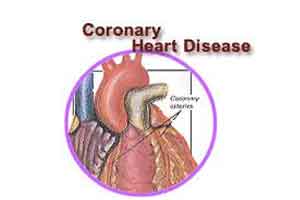- Home
- Editorial
- News
- Practice Guidelines
- Anesthesiology Guidelines
- Cancer Guidelines
- Cardiac Sciences Guidelines
- Critical Care Guidelines
- Dentistry Guidelines
- Dermatology Guidelines
- Diabetes and Endo Guidelines
- Diagnostics Guidelines
- ENT Guidelines
- Featured Practice Guidelines
- Gastroenterology Guidelines
- Geriatrics Guidelines
- Medicine Guidelines
- Nephrology Guidelines
- Neurosciences Guidelines
- Obs and Gynae Guidelines
- Ophthalmology Guidelines
- Orthopaedics Guidelines
- Paediatrics Guidelines
- Psychiatry Guidelines
- Pulmonology Guidelines
- Radiology Guidelines
- Surgery Guidelines
- Urology Guidelines
Effects of Physical Activity on mortality in patients with Stable CHD : JACC

Stewart RA, Held C, Hadziosmanovic N, et al., on behalf of the STABILITY Investigators conducted a study to find out association between exercise and mortality in patients with stable coronary heart disease (CHD). It was found that in patients with stable CHD, more physical activity was associated with lower mortality.The study has been published in Journal of American College of Cardiology.
In this STABILITY (Stabilization of Atherosclerotic Plaque by Initiation of Darapladib Therapy) trial which is a large, multicenter, randomized trial involving patients with stable chronic coronary heart disease the finding that more exercise provided greater risk reduction in stable sedentary persons is consistent with other studies, but that the benefit was in the highest risk group is a new finding.
A total of 15,486 patients from 39 countries with stable CHD who participated in the STABILITY (Stabilization of Atherosclerotic Plaque by Initiation of Darapladib Therapy) study completed questions at baseline on hours spent each week taking mild, moderate, and vigorous exercise. Associations between the volume of habitual exercise in metabolic equivalents of task hours/week and adverse outcomes during a median follow-up of 3.7 years were evaluated.
In the study the mean age of participants was 65 years of which about 20% were female. It was found that there was a graded decrease in mortality with increased habitual exercise, which was steeper at lower compared with higher exercise levels. A graded decrease in mortality occurred with increased habitual exercise that was steeper at lower compared with higher exercise levels. Doubling exercise volume was associated with lower all-cause mortality (unadjusted hazard ratio [HR]: 0.82; 95% confidence interval [CI]: 0.79 to 0.85; adjusting for covariates, HR: 0.90; 95% CI: 0.87 to 0.93). These associations were similar for cardiovascular mortality (unadjusted HR: 0.83; 95% CI: 0.80 to 0.87; adjusted HR: 0.92; 95% CI: 0.88 to 0.96), but myocardial infarction and stroke were not associated with exercise volume after adjusting for covariates. The association between decrease in mortality and greater physical activity was stronger in the subgroup of patients at higher risk estimated by the ABC-CHD (Age, Biomarkers, Clinical–Coronary Heart Disease) risk score (p for interaction ¼ 0.0007).
It was concluded that in patients with stable CHD, more physical activity was associated with lower mortality. The largest benefits of exercise were observed in sedentary patient groups, and between those with the highest mortality risk.
For more details click on the link :

Disclaimer: This site is primarily intended for healthcare professionals. Any content/information on this website does not replace the advice of medical and/or health professionals and should not be construed as medical/diagnostic advice/endorsement or prescription. Use of this site is subject to our terms of use, privacy policy, advertisement policy. © 2020 Minerva Medical Treatment Pvt Ltd